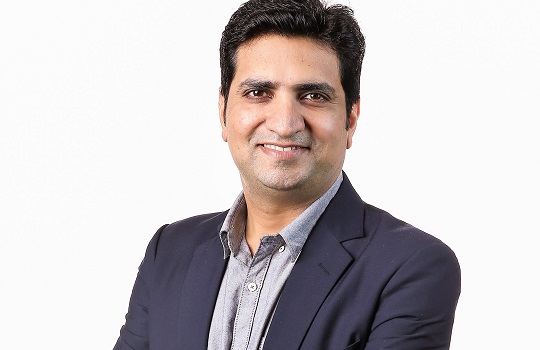
Execution is the key [in Open Banking]. APIs are just one trivial part and building them will not get any value unless an ecosystem for Open Banking is created.
Singapore is widely considered the world’s leading light in Open Banking adoption, blazing a trail for countless countries that have embraced the ‘industry-led’ approach. While Australia opted for a regulator-driven model, our end goals remain the same: to foster a more competitive, and consumer-centred, banking environment. The Lion City’s pioneering efforts no doubt offer a wellspring of ideas, innovations, and future prospects for our own Consumer Data Right.
FST speaks with Jitendra Tekchandani, Executive Director, Ecosystem and Open Banking at DBS Bank, a veteran of multiple Open Banking deployments, on the challenges and successes in his OB endeavours, lessons for local banks in securing value-added third-party partnerships, and the cultural change necessary to unlock the full potential of an Open Banking economy.
FST Media: Singapore continues to be a pacesetter for Open Banking in the APAC region. What lessons can Australia’s industry and regulators take from Singapore’s successes?
Tekchandani: Open banking initiatives fall broadly into two categories: organisation-driven and regulatory-driven. Asia’s (including Singapore’s) Open Banking initiatives are primarily organisation-driven, whereas Australia, Hong Kong, and Europe’s are regulatory-driven. While regulators are pushing financial institutions to adopt Open Banking, banks must find their strategic intent to embark on their Open Banking journey, and it should not just be about complying with regulatory guidelines. They should convert this opportunity to achieve the full potential of Open Banking.
Singapore’s successes have basically taught us that the banks should define an Open Banking and ecosystem strategy along with business units and product units, keeping in mind that Open Banking is much larger than APIs and data. We recognise six pillars of Open Banking:
- Build Platforms to connect with the third parties
- Define Governance to ensure everything is organised and under control
- Set up Operations to support an Open Banking and ecosystem model
- Have a dedicated Team to own ecosystem banking
- Develop an Open and Collaborative Culture to embed Open Banking within the organisation
- Have the impact of all these things felt through Partnerships – whether internal or external
FST Media: How would you define success in fully functioning ‘Open’ ecosystem – not only from the industry’s, but also consumers’ perspectives?
Tekchandani: Open Banking is inherently multi-disciplinary and requires the collaboration and leadership of various parties like banks, customers, partners and regulators, and the success criteria differs for each.
For financial institutions, KPIs are multi-layered and keep evolving with time, as we have observed with digital banking KPIs. Starting from the number of reusable use cases, number of partners connected, ease of partner integration (effort vs. benefit), number of transactions, and finally progressing to the financial impact of these transactions (in terms of acquisition and engagement) determines success for financial services.
Success for partners, who are consumers of APIs, will be determined by how banking capabilities are solving their problems (payments, lending, data, etc.) or generating new revenue streams. At the same time, it’s about how these collaborations add incremental value, not only to customers but also to banks.
For customers, success is driven by choices they get at the right time and at the right place with a seamless customer experience.
Regulators’ Open Banking goal is to foster a culture of collaboration and innovation, making it easier for the third parties and banks to better collaborate.
FST Media: A key concern that has arisen from Open Banking deployments revolves around banks’ traditional security frameworks aligning with a mass scale, cross-industry data-sharing regime (a key reason for the delay in Australia’s own Open Banking rollout). What steps must organisations take to mitigate these risks and ensure that customer data is protected?
Tekchandani: Firstly, it is a myth to suggest that Open Banking and APIs enable anyone to get unfettered access to a customer’s banking or personal data. Just as we are doubling down on AI, we are also paying as much attention, if not more, to data privacy and security.
Our users trust us to protect their data and privacy, and it’s a responsibility that we take very seriously. At DBS, we make sure that we have all the tools, systems, and processes in place to prevent any breaches from happening and detect them very quickly if they occur. We also have third parties to audit our security systems and processes, putting in place industry standard technology. We always need to ensure that we only share anonymised data. Even with customer consent, in some use cases, we need to put in place policies, processes, and to safeguard information security, confidentiality, and data governance. Strong authentication for partner and customers should be in place with the latest technology solutions.
Secondly, customer data privacy is not just the responsibility of one team or Open Banking teams, but of everyone in the chain of command or rank-and-file, if you will. Organisations need to consistently raise greater awareness of information security among everyone. In doing so, organisations must also define processes that are robust but not onerous to adopt.
FST Media: As a seasoned industry executive who has led the implementation of Open Banking platforms across multiple markets, and within two separate banks (DBS and Citi), what are some of the challenges you’ve faced in implementing these systems?
Tekchandani: There were many challenges and immense learnings at every stage of the process over the last four years across both organisations.
While building the platform, the challenges faced were in deciding which use cases to build out and the APIs that need, or at the time needed, to be published. Another challenge was also in determining which use cases should be built first and then how one should get involved in finding partners or enabling co-creation with partners. Lastly, there was a challenge in defining the journey, as building journeys for our own channels is different from building journeys for partners.
For partnerships, the challenges were in defining the right value proposition for each use case to ensure there is a win-win situation for everyone and that the integration effort for APIs is lessened while time-to-market is faster.
While defining the processes, the difficulties were in ensuring that we built the right culture and awareness around Open Banking, ensuring that our Open Banking strategy is aligned with the overall business strategy, and identifying the governance and operational processes’ position as a consumer bank.
FST Media: As Open Banking legislation continues to be adopted around the globe, what future do you see for the financial services industry as the framework matures?
Tekchandani: Open Banking can bring potential opportunities not only for the banks but also for the partners who connect with banks in the times ahead. For me, there are three important opportunities from Open Banking moving forward:
- Distribution of existing products: If account aggregations, payments etc. are done accurately, it will lead to incremental transactions and increased customer engagement. Use cases for acquisition help banks and partners acquire new customers.
- Enhancing existing products: For example, with regards to lending, banks can collaborate with the third parties who have a large customer base and can come up with new models of lending and improve their offerings, which in turn will result in net new revenue.
- Building new products or services (like BaaS): Banks can leverage existing products, data and processes, and build offerings which can be used by third parties. There are a few examples of how banks can build white-label credit card services for third parties to launch a credit card business.
FST Media: Cultural change within organisations is critical to enabling transformation initiatives. What cultural transformation needs to take place in order to unlock the full potential of the Open Banking economy?
Tekchandani: While it’s critical to implement all building blocks of Open Banking – from platform to partners to governance and operations – banks cannot achieve the desired impact if they do not have the right team and the right culture in place. It can therefore be inferred that digital transformation cannot be achieved without a digital mindset. We must then appreciate that:
- Firstly, it is not a part-time job and it cannot be treated as a side business of a single team. There should be a dedicated team where each platform has joint ownership from business and technology teams.
- As I mentioned earlier, this is new territory for consumer banking where partners need to be served. Hence, new roles like business development, partner solutions, and partner engagement managers will be required; and banks should learn about team construct from payments companies whose business models are based around partnerships.
- The role of marketing is essential to creating the awareness of various partnerships entered into by banks and having joint marketing programs to increase the usage of products.
- As it is said, digital transformation requires big cultural shake-ups. Open or ‘Ecosystem Banking’ will sometimes also require a cultural reset. It is an open culture that spurs people to collaborate and participate in an ecosystem focused on customer-centricity. Ecosystem banking must be embedded within the bank’s culture. Whenever the product manager thinks about the product, there should be an ecosystem dimension along with the digital. Banks are now trained to define customer experiences, and so now is the time to be passionate about partner experiences!
FST Media: As Open APIs bloom and a purely digital ecosystem takes shape, what strategy must banks adopt in order to retain their existing customers and induce loyalty?
Tekchandani: Prior to any initiative, project, or strategy taking place, and while building the Open Banking strategy, one should consider the following three questions:
- Why? Be clear with the objective! As I mentioned earlier, Open Banking initiatives fall broadly into two categories: Organisation-driven and regulatory-driven. Hence, a bank needs to decide whether they aim to meet the regulation, or they see ecosystem banking as a business opportunity. The strategic intent should be clear, so that the required resources can be devoted to the initiatives. If decided that it is an opportunity which aligns with the bank’s growth strategy, the overall direction should be aligned with the product and digital strategy.
- What? Finalise use cases that are important to your bank. Once the strategy is clear, you have a direction of what needs to be done. In the regulatory-driven model, regulators are driving what should be delivered and when. For example, one of the use cases regulators were asking to build was in acquisition, which may or may not be aligned with the bank’s priority. Banks should build use cases which are aligned with their product and the digital strategy, which in turn leads to the kind of partnership that needs to be formed.
- How? Execution is the key. APIs are just one trivial part and building them will not get any value unless an ecosystem for Open Banking is created. This ecosystem should address all the six pillars that we have discussed earlier. ◼





